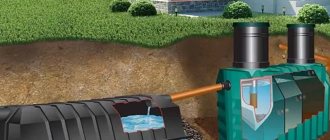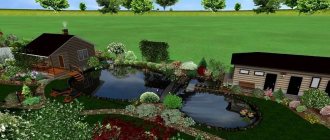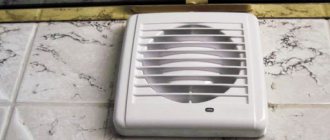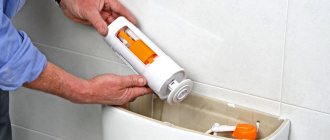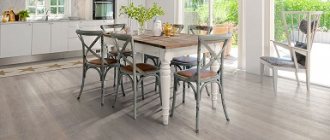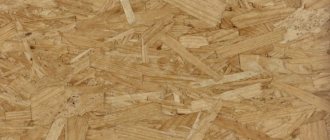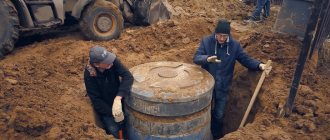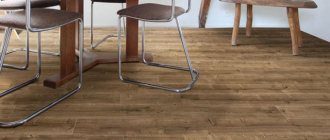The lack of sewerage, thanks to the development of technology, makes it possible to minimize inconvenience by using septic tanks or biological stations based on them. Among the extensive range of septic tanks produced by domestic manufacturers, budget structures of small volumes are always popular, one of the representatives of which is the Microbe septic tank.
The Microbe device range was initially designed for constant service from one to two people, and was also in demand in cases where a large family lived in a country house or in a country house for a short time. Recent developments have allowed manufacturers to expand the series with more voluminous modifications designed for continuous processing of wastewater from three to four residents.
Rice. 1 Septic tank Microbe in cross-section
Operating principle of septic tanks
The operating principle of any septic tank is based on long-term settling of sewage, the average duration of this process is three days, taking into account the fact that on average one resident receives about 150 liters of wastewater per day. Based on these calculations, the minimum capacity of a septic tank for constant use by one user is 450 liters, which is usually indicated in its name and labeling (example - septic tank Microbe 450).
Sewage flowing into the receiving chamber of the settling tank consists of two fractions - part of the waste is suspended in the liquid, the other, lighter, is located on the surface. Typically, a transition pipe is placed under the top layer, which directs the settled liquid from the middle layer to the next chamber.
In the second settling tank, the process of separating suspended fractions continues, after which the clarified wastewater is sent to a drainage well or to filtration fields. The number of settling chambers can be more than two, but usually does not exceed three - a further increase in their number does not lead to a noticeable increase in cleaning efficiency.
When constructing septic tanks with your own hands, you use free-standing, closed top and bottom wells made of concrete rings, which occupy a significant amount of space on the site.
The advantage of plastic products is their small overall dimensions due to the ability to place two or more sedimentation tanks in one tank.
Multi-chamber sedimentation tanks resemble a cesspool in their operating principle, with the difference that there are several of them, so their efficiency in treating wastewater is not too high and rarely exceeds 70%. When discharging wastewater from a sedimentation tank into the soil of a site, additional treatment is required; for this purpose, filtration fields or drainage wells are installed. In all cases, the filter composition in the form of sand, fine gravel or crushed stone needs to be periodically replaced.
Rice. 2 The principle of operation of an autonomous sewerage system using the example of the Tank model
Higher quality cleaning is achieved using biological methods, using two types of bacteria that eat organic matter: anaerobic and aerobic.
Anaerobic colonies live in conditions that do not require access to air; with their active use, the efficiency of wastewater treatment increases to 90%, and as a result of waste decomposition, methane is released. For the life of aerobic species, oxygen is required, which is delivered to the colony along with air using a compressor - in this case, the liquid becomes 98% pure, additional treatment fields and drainage wells are not required, the water can be safely used for irrigation and technical needs in individual households. Aerobic bacteria, together with compressors, are used in deep biological treatment stations (HBT), which have a fairly high cost; if desired, their analogue can be made in any type of septic tank by immersing a pipe for supplying air from the compressor into one of the chambers and adding a colony of bacteria acquired to the container On the market.
Rice. 3 Design and main dimensions Microbe 450 - 900
What are bacteria for?
Cleaning a sanitary facility is a rather unpleasant and labor-intensive process. Those who use the services of a vacuum cleaner know firsthand what a “pleasant” aroma hovers in the air during the procedure. After removing waste, it is necessary to disinfect the toilet with bleach , which helps to destroy the walls of the septic tank or pit. But do not forget that in addition to unpleasant emotions, you receive an invoice for the services provided .
Bacteria for cesspools and septic tanks will help avoid the above problems. They are environmentally friendly, kill germs, and the toilet will need cleaning much less often.
Description of the Microbe design
Septic tanks for home and garden Microbe are a vertical cylindrical septic tank, the container of which contains two chambers (Fig. 3), its main elements are:
Building 1). Molded from HDPE low-density polyethylene, PP polypropylene, equipped with stiffeners on the sides, top and bottom.
Neck (2). Designed for servicing a septic tank, it has a height of about 300 mm and a diameter of 510 mm for a standard manhole size.
Cover (3). Serves to protect against precipitation and prevents the penetration of odors.
Biofilter chamber (4). Integrated into the settling chamber, it is designed to collect clarified water and further purify it with anaerobic bacteria.
Bends (5, 6). The housing contains pipes of standard diameter, to which the sewer line leaving the house is connected, and the pipeline entering the filtration fields or drainage wells is also connected.
Cuff (7). Designed to connect sewer pipes coming from the house to the inlet pipe of the septic tank.
Rice. 4 Septic tank Microbe in a system with a drainage well
Experts' conclusions
If you plan to use the sediment obtained after processing by bacteria as fertilizer , choose biological products in tablets . They are quite effective for cleaning , and most importantly - absolutely harmless . Buyers prefer products called: “Doctor Robik”, “Micropan”, “Septifos”, “Weist Treat” . People claim that they cope with more than just ordinary pollution. These drugs perfectly remove unpleasant odors , dissolve paper, feces, fats and phenols . They contain specially selected enzymes and microorganisms that do not harm the environment. The correct approach to the selection of biological products and strict adherence to the instructions will ensure effective cleaning of the cesspool or septic tank. Bacteria are a sure way to get rid of unpleasant odors when disposing of waste, as well as saving money .
Features and Benefits
The Microbe mini-septic tank is designed for operation in an autonomous sewer system that serves a small number of residents or is used periodically. Its characteristics are most suitable for temporary housing facilities: cottages and guest houses, temporary construction sheds, car parks, tanks can be used as a sump for storm drainage.
Features of the Microbe series product line:
- Budget cost of products, the smallest volume septic tank Microb 450 can be purchased for 10,000 rubles.
- The Microbe series includes 6 models with a daily volume of treated wastewater from 450 to 1800 liters.
- The degree of wastewater purification at the outlet of a septic tank without the use of anaerobic bacteria is 60 - 65%.
- Unlike other types, where the tank is divided into two settling chambers of equal volume, in Microbe the second settling tank is integrated into the inlet one - this has made it possible to significantly reduce the total volume and is a distinctive feature of the series.
- The septic tank operates autonomously without the use of electricity; anaerobic bacteria do not need air supplied by compressors.
- Due to their design features, Microbe septic tanks are not designed for use in the cold season.
- Small overall dimensions and light weight make it easy to install a septic tank with your own hands in a short time.
- The need for cleaning occurs once every 10-12 months; the operation is usually carried out at the beginning of winter, followed by preservation of the septic tank.
Rice. 5 Option for supplying wastewater to an infiltrator located above the level of the septic tank outlet pipe
Flaws
The main disadvantage of Microbe septic tanks is the low height of the neck (about 300 mm) and the correspondingly high location of the inlet and outlet pipes. It is known that the depth of soil freezing in the Moscow region, depending on the composition of the soil, lies in the range of 1.36 - 2 m. And if we take into account the slope of the sewer pipeline of 20 mm per linear meter towards the septic tank, then at the exit from the house at a considerable distance to sump, the pipes will be located almost on the surface and will certainly freeze in winter. Insulating the pipeline in this case is pointless, since the depth of immersion of the septic tank 300 mm underground is clearly insufficient to protect it from freezing.
Until this problem is eliminated, the manufacturer provides the possibility of increasing the height of the neck by installing intermediate rings with a height of 300 mm (the cost of a ring with dimensions of 300x500 mm is about 2000 rubles)
It should also be noted the low efficiency of wastewater treatment with Microb septic tanks - in addition to the fact that the two-chamber design is initially inferior to the three chambers in terms of the degree of clarification in more expensive models (septic tank Tank in Fig. 2), the second Microb chamber has a rather small volume.
Since the Microbe brand product line is a leader in terms of small tank volume and light weight, during installation it is necessary to take measures (anchoring, blind area) to prevent the septic tank from floating up during an autumn flood or if there is high groundwater on the site.
Rice. 6 Model range Microbe - price list of one of the companies
Tips for use
If you are using the drug for the first time , then choose it marked “start” . In such products, elements have been added that have auxiliary effects on the life of the first colony of bacteria. The remaining liquid after the “work” of microorganisms in the pit must be removed using a pump . To prevent it from becoming clogged with solid residues, use a filter .
The water obtained as a result of purification cannot be used as drinking water; it can be used to water an area with vegetation.
If the bacteria have died , you must first find out the cause , eliminate it , and then add a new portion of microorganisms. In some cases, the bacteria may die. The following substances contribute to this:
- manganese;
- household chemicals;
- antibacterial drugs.
If the above elements get into a septic tank or pit, it is necessary to update and strengthen the colony of bacteria.
Model range, characteristics
The Microbe line of septic tanks includes 6 modifications, the last two began to be produced relatively recently, well-known manufacturers of these products are the Triton Plastic company with a production complex in the city of Mytishchi, Moscow region, and the Rosprominzhiniring group of companies from Chelyabinsk.
Microbe-450 . The volume of the main sump tank is designed for 450 liters, which is enough to serve one consumer daily or three people during the day. Overall dimensions (height, tank diameter) 1430x800 mm and light weight of 35 kg allow you to transport the septic tank in a car and install it yourself without outside help, the average price of the product is 1200 rubles.
Microbe-600 . The product is structurally no different from the previous model, the volume of the tank is increased due to the larger diameter, overall dimensions are 1430x900 mm with a weight of 41 kg. Septic tank Microbe 600 is designed for one person and rare visits by guests, or for periodic residence of several users, its average cost is 14,000 rubles.
Microbe-750 . The model is designed for a daily waste volume of 250 liters, which is enough for the permanent residence of one or two people who are absent from the house for some time due to work. The overall dimensions of the tank are 1430x1000 mm, the weight reaches 45 kg, the average price is 16,000 rubles.
Microbe-900 . The optimal classic option for two people permanently living in a house, for this design the dimensions are maximum and are 1430x1100 mm with a weight of 53 kg, when purchasing you should focus on the price of 18,000 rubles.
Microbe-1200 . A relatively new product (appeared on the market in 2021) with overall dimensions of 1840x1170x1380 and a weight of 80 kg; unlike previous models, the tank is located horizontally. The device is designed for a daily volume of sewage drainage of 400 liters, which is usually enough for three people to live permanently in a serviced house, the price is about 22,000 rubles.
Microbe-1800 . The most voluminous model in the product line, has overall dimensions of 1840x1170x1980 with a weight of 110 kg, designed for the collection and purification of wastewater in a daily volume of 600 liters, which satisfies the needs of a family of four, it can be purchased for approximately 29,000 rubles.
Rice. 7 Installation diagram of an autonomous sewer system
Septic tank installation
Before installing the septic tank, the optimal location for it on the site is selected according to two criteria: the maximum distance from sources of water intake (well, borehole) for individual water supply and the lowest point on the site, which prevents the penetration of treated wastewater into sources of drinking water.
According to sanitary standards, the distance between the septic tank and the source of drinking water must be at least 50 m; in extreme cases, it is permissible to locate the drainage tank or filtration fields no closer than 20 m from the well or well.
It is also necessary to take into account the ease of access of the sewer truck; the distance from the settling tank hatches to the nearest location of the vehicle should not exceed 4-5 meters.
After determining the location of the septic tank, they call a company involved in their installation (these services are almost always provided by sellers of treatment equipment) or carry out the installation themselves, the procedure occurs in the following sequence:
- Manually or using special equipment, dig a pit with a volume reserve at the bottom and sides of 150-200 mm; the top of the neck with a lid should in no case be below ground level (this is done for ease of maintenance of the septic tank and to prevent flooding of the hatch with sediment and surface waters).
- The bottom of the pit is compacted or tamped, a sand cushion is poured on top and a concrete slab is laid on a horizontal level the size of the length and width of the septic tank; in the absence of a slab, a strictly horizontal cement-sand screed with a thickness of 150 - 200 mm is made.
Rice. 8 Rules for placing a septic tank on the site
- A septic tank is installed on top of the slab and filled with water; its surface must exceed the level of the soil surface (backfill) by at least 200 mm.
- A sewer pipeline from the house with a standard diameter of 110 mm is connected to the septic tank, using orange branch pipes and pipes intended for installation of external lines. If the pipes are shallow, they are insulated and placed in a shell (shell) made of solid heat-insulating materials.
- Stir the cement-sand mortar in a ratio of 1:4 without adding water, backfill the space between the tank shell and the walls of the pit.
- The neck and upper surface of the septic tank are insulated. During installation, many companies cover the surface of the septic tank with soft mats made of foamed polyethylene, which, when covered with earth, are compressed and lose their thermal insulation properties due to a decrease in the thickness of the insulator. It is correct to use waterproof rigid materials for thermal insulation - polystyrene foam, extruded polystyrene foam (Penoplex), foamed polyurethane foam. It is best to use foam chips or bend thin slabs of foam or Penoplex to fill the spherical shell of a septic tank, and if the top is flat, lay rectangular sheets of heat insulation of any thickness.
- After laying the insulation, it is covered with sand; for better thermal insulation, you can use an additional layer of expanded clay before final sprinkling.
Rice. 9 Installation Microbe - examples
How to choose the right drug
To achieve maximum effectiveness from the drug, you must carefully select it and study in detail the instructions that come with it. It is worth paying attention to the following indicators:
- The number of bacteria in the concentrate. The higher the level of density of microorganisms, the more active the effect of the drug;
- Types of residues on which the product is designed to act;
- Number of bacterial species. More types of microorganisms equal more types of waste they can process;
- Consider the total amount of sewage for which the specified amount of product is enough.
There is a huge selection of bacterial preparations on sale in various forms: powder, tablets, granules, concentrated solutions . This does not affect their functionality or effectiveness. However, it should be noted that in dry form the bacteria are in “sleeping” mode . It will be necessary to carry out some procedures to wake them up. It is easier to use liquid preparations in which microorganisms are active. But the shelf life of liquid solutions is much shorter than that of powders and tablets.
Important! If the washing machine or dishwasher drains lead to a cesspool or septic tank, it is necessary to select bacteria that are resistant to chemicals (washing powders, gels). All this is reflected in the instructions for the product.
Installation of the infiltrator
Before starting work, choose the lowest and most distant place on the site from sources of drinking water, since the volume of excavation work is quite large, the use of special equipment will be required.
Work on setting up a post-treatment field with infiltrators is carried out in the following order:
- A pit is dug with a total area in accordance with the tables; its depth, taking into account the filter backfill, should not allow freezing of the drains in winter, usually 1.5 - 2 m is sufficient.
- The bottom and walls of the pit are leveled, then sand is covered with a layer of 0.2 m and then a gravel cushion (crushed stone or pebbles can be used) with a thickness of at least 0.5 m.
- Plastic infiltrators are placed on the backfill at a distance of at least 0.5 m from the walls of the pit and 1.5 m from each other.
- Sewer pipes from the septic tank are connected to the infiltrators using pre-purchased pipes, the bodies are connected to each other with pipe cuttings, observing slopes of at least 20 mm per linear meter, and ventilation is brought up.
- Cover the entire area with geofabric, if necessary cover the plastic chambers with insulation (expanded clay can be used), fill the top with soil and lay the previously removed turf.
Rice. 10 Table for calculating the area of filtration fields
Installation of wastewater treatment systems
Installation of a Microbe septic tank due to the low degree of wastewater purification is unacceptable without further filtration (additional purification). There are several options for carrying out this procedure, common to them is the use of sand and gravel backfill as a filter.
Filtering fields . In this option, water from the septic tank flows with a slight slope onto a sand and gravel area, where it flows from the sewer pipes through holes made in them. Typically, plastic pipes with a standard diameter of 110 mm are used, which extend from the ground upward to a height of at least 500 mm to remove gases (methane) from the system.
Usually, after installation, the field is covered with geofabric to prevent mixing of the filter sand and gravel backfill with the soil of the site. The area of the fields is directly related to the volume of the septic tank (calculated using tables); the disadvantage of this method is the need to update the backfill every 3-4 years and the impossibility of using the site for planting perennial plants and installing outbuildings. Their use is not effective in clayey soil (water will not drain into the soil) and high levels of surface water, characteristic of wetlands.
Rice. 11 Installation diagram of filtration fields
Infiltrators. The use of special plastic devices in filtration fields, shaped like an inverted trough with pipes for inlet and outlet of sewer pipes and ventilation, solves several problems:
- Reduces the area of filtration fields by supplying wastewater to individual small areas.
- Allows you to cope with large volumes of wastewater, which, if there is an excess, is collected in plastic chambers, and does not spill over the entire field, rising up. This prevents waterlogging of the field when there is a large volume of runoff.
- They increase cleaning efficiency by supplying water at higher pressure due to the water column in the infiltration chambers.
- They prevent contact of the surface soil of the field with untreated sewage - this makes it possible to arrange not only flower beds, but also vegetable gardens on the surface.
The use of infiltrators does not eliminate the need to change the backfill every 3-4 years and is ineffective in clayey soils and wetlands.
Rice. 12 Filtration fields
Drainage wells . Drainage wells act as an alternative to filtration fields; their design is not very complicated - the wastewater after the septic tank enters a tank that does not have a bottom and is installed on a sand and gravel bed. This method allows you to remove lines from areas with a clayey or too wet surface layer; the disadvantages include great difficulties when changing the filter bed, which in many cases is never updated.
Why is it beneficial for bacteria?
Today, many people practice traditional methods of cleaning cesspools: sewage disposal and treatment with bleach. But this method is quite unpleasant and only masks the smell of rotten waste . The caustic vapors of bleach are harmful to humans, the soil and the structures themselves.
Biological products work more efficiently and accurately and have the following advantages:
- Not dangerous for plants and livestock;
- Significantly eliminates unpleasant odor;
- Do not destroy tanks and pipes;
- They have disinfecting properties.
By choosing the right product, you will forget about the stench, and you will be less likely to resort to emptying a cesspool or septic tank.
What not to do when installing an autonomous sewer system - recommendations
Errors in the installation of autonomous sewage systems are found in numerous videos from the Internet; many companies advertise their services, demonstrating the work carried out with gross violations of technology, the most common are:
- Lowering the septic tank into a pit directly onto the sand without a cement-sand cushion or concrete slab. As a result, under the influence of groundwater, from its own weight with additional backfilling of cement mortar or with constant filling, the septic tank can sink some distance underground. This will cause damage to the sewer pipes entering and exiting into it, disrupt their slopes to drainage wells or filtration fields, and deform the inlet and outlet pipes on the body.
- When installing, backfill the tank with regular sand without the use of cement. This violation of the instructions can lead to the empty septic tank floating up as a result of being washed away by melt water during spring floods.
Rice. 13 Fields with infiltrators
- The use of unsuitable materials for thermal insulation is a mistake of almost all companies, which, for the sake of cheapness and speed of work, perform meaningless manipulations. Laying films of foamed polyethylene (Penofol) on the surface of septic tanks and placing soft tubular shells of this material on underground sewer pipes does not constitute insulation - after compressing the material with soil, its thickness will become minimal and the thermal conductivity coefficient will increase tens of times. For thermal insulation of underground communications, the only acceptable option is rigid waterproof shells for pipes, sheets or crumbs for shells made of ordinary (foam plastic) and extruded polystyrene foam (Penoplex).
- Insufficient burial depth. If the septic tank is planned to be used in winter, then when purchasing the Microbe model, its owner makes a mistake - due to the short neck, the tank cannot be lowered deep underground and, accordingly, the drains will freeze not only in the sump chambers, but also in the inlet and outlet pipes.
- Incorrect design of filter fields. Sometimes geotextiles are placed in a dug pit before filling with sand and crushed stone - this mistake will lead to the pores of the geotextile becoming clogged with fine sand and runoff dirt. As a result, there will be rapid siltation of the field and the release of wastewater to the surface of the site.
Rice. 14 Mistakes when installing septic tanks
Reviews
Many reviews of the well-known septic tank Microbe are friendly; positive qualities include small overall dimensions, resistance of the housing to temperature changes and mechanical loads.
“About the filling of the septic tank. I installed my 900 l Microbe in 2015, since then we have been using it periodically, in the winter a couple of times a week, in the summer more often and with a large number of people (5 people in a family). My parents recently arrived at their dacha for construction and have been living there all the time since spring. I decided the other day that it’s time to think about pumping during this period. I stuck a stick inside the septic tank - a hard bottom, without signs of silt. There were thoughts that the latrine stuff penetrated into the infiltration, but then there would have been a stench throughout the entire neighborhood. In general, it’s like this: the third year of use, I haven’t pumped it out even once.”
Unreal-76, Aprelevka
“I purchased Microbe 600 liters for gray wastewater from a bathhouse. I bought it from local dealers, not directly from the manufacturing company - it turned out to be about 2000 rubles more expensive. But he came to the warehouse in Vsevolozhsk and picked it up right away; there was no need to wait for delivery from Moscow. I secured the septic tank to the trunk, and pushed the 60 cm long neck into the cabin. I was also thinking about grabbing an infiltrator, but it was a little different, not like in the photo of Triton’s website - twice as big. There was no way I could have stuffed this bandura in again, so I didn’t buy it. Well, slowly, at 60 - 70 km/h, I took him to the dacha, 60 km from the warehouse.
There, a tractor had already dug a hole one meter deep. I worked with a shovel and deepened it a little, and installed a septic tank. The volume on the sides turned out to be large; more than 100 bags went into it. I installed the pipes myself, so far I don’t use them too often, there are no problems, I will continue to install a filter.”
Krammy, St. Petersburg
“We have Microbe 450. I installed it myself that fall, just before the frost. But still, the frosts did not allow me to finish it. I placed a septic tank along the dock, that is, sprinkled it with a sand-cement mixture, gradually filling it with water. All that was left to do was cover it with earth, but they hit me with sticks. That is, the neck turned out not to be sprinkled, and then it was covered with snow. And so it all stood until spring, with water in the septic tank. Of all the accidents, only the hatch cover was damaged (a piece of the inside came off). The microbe did not lose its tightness, the water did not leave and remained at the old mark.”
KIN 24, Zheleznogorsk, Krasnoyarsk region
Rice. 15 Appearance Microbe 1200/1800
Microbe septic tanks are the most budget option of the entire range of similar devices; the product line is designed for treating sewage with a number of permanent residents from 1 to 4 people. Thanks to their simple design, the models have small overall dimensions and light weight, but with only two chambers and a small volume of the biofilter compartment, the efficiency of wastewater treatment is not too high and the use of filtration fields or drainage wells is mandatory.
Favorable conditions for bacteria
In order for microorganisms to feel comfortable, they need to create the proper conditions . First of all, this is temperature , the norm of which is from 4C° to 30C° . If the thermometer drops below the minimum mark, the bacteria will go to sleep . At high temperatures they will die . Microorganisms require constant nutrition. If you have a seasonal toilet , then the colonies need to be updated every year .
Monitor the water level in the septic tank. It should not fall below solid waste, its norm is 2-5 cm.
Bacteria feed
only on organic matter. Therefore, do not throw metal or plastic into the tank .
